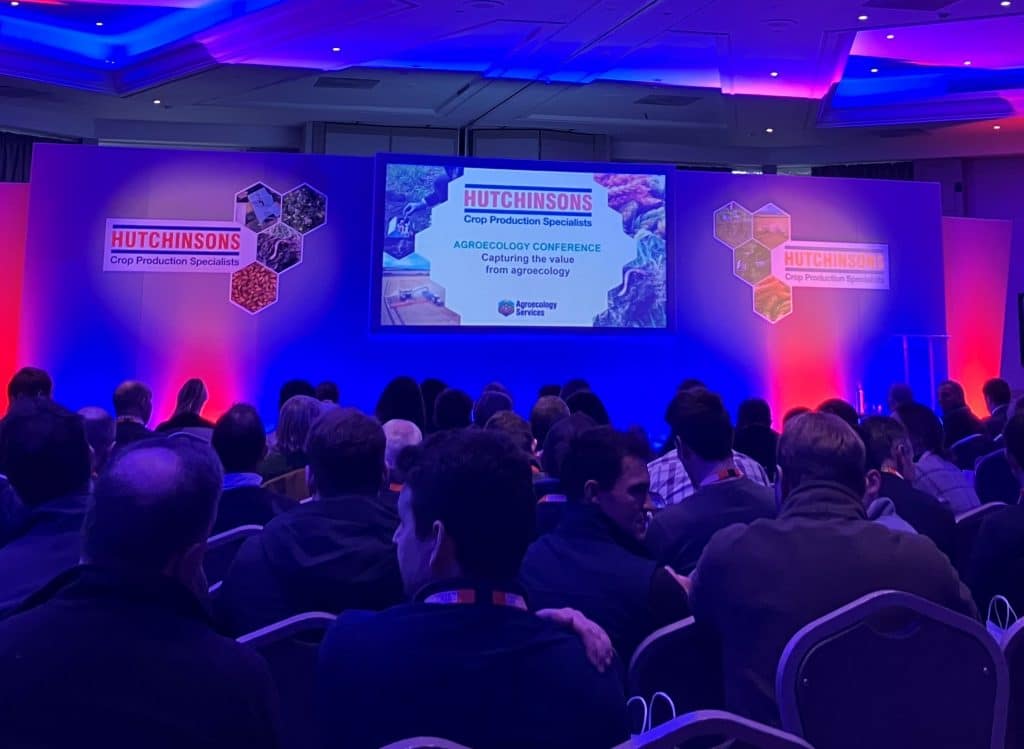Agroecology charter brings clarity to successful regen farming
With interest in regenerative farming continuing to increase, leading agronomy firm Hutchinsons is launching its groundbreaking Agroecology Charter ...
With interest in regenerative farming continuing to increase, leading agronomy firm Hutchinsons is launching its groundbreaking Agroecology Charter to help growers and agronomists successfully understand and implement the intricacies of regen practices
First announced at the Hutchinsons Agroecology conference in January, the Charter to be unveiled at the Groundswell event in Hertfordshire, provides much-needed clarity on the practical implementation of the five core principles of regenerative farming (see box), the risks involved, and how best to make regen work on individual farms.
“To date, there has been no globally accepted definition of agroecology/regenerative agriculture, other than the widely recognised five key principles,” says Services Director, Mike Young.
“There is no industry recognised definition of what these practices look like, how they should be implemented, the risks associated with the practices, or how these risks should be mitigated. As a result, agroecology/regenerative agriculture is often not implemented successfully and, in many cases, the intended outcomes are not delivered, resulting in significant ongoing agronomic and financial implications.”
Mr Young also notes that there is a degree of uncertainty within the supply chain regarding the precise meaning of “regenerative”. Some food processors, traders, retailers, NGOs, and advisors are asserting regenerative credentials for commercial benefits, without substantial backing or a clear and obvious definition.
Route to success
The Agroecology Charter addresses these issues by clearly defining the meaning of Agroecological Farming (Regenerative Farming) and providing a framework to help growers and agronomists identify a clear pathway to implement the necessary management changes, while identifying the risks that may need mitigating in the process.
It also demonstrates to end-users, consumers, and the supply chain how agroecology advice, services, and crop management practices, will support their sustainability objectives.
“Agroecology is about maximising cultural methods, to optimise soil and plant health, in conjunction with carefully targeted inputs,” Hutchinsons Head of Agroecology, Ed Brown, says.
“This balance between cultural techniques and conventional agronomy is highly complex and requires the highest quality advice, which is based upon multiple years of research, experience and knowledge.”
Hutchinsons has many years of practical agroecology experience, supported by significant research and field trials, including the Helix Agroecology Farm in Shropshire, which in 2021, became the first Helix farm to focus solely on the principles and practices of agroecology.
“We have considerable technical understanding and have learned many lessons. We understand what is required, what is expected, what the risks are, and most importantly, how best to mitigate the risks.”
For agroecological crop management to be successful and its objectives to be achieved, Mr Young says any farm business must carefully consider a host of different aspects, from its resources such as soils, machinery, labour and farm buildings, to other practical considerations around cropping, pest/weed/disease control and nutrition.
Start with soils
Soil is the most important resource on any farm, regardless of the production practices used, and is understandably a key focus of the core regenerative agriculture principles, so should be the starting point for anyone beginning the transition to regenerative farming.
“It is therefore essential that farmers, in conjunction with their agronomist, can determine what a healthy soil is,” says Mr Brown.
“This means looking beyond the one-dimensional measurements of pH, P, K and Mg, and instead measuring and interpreting three-dimensional soil assessments, which include the physical, chemical and biological indicators of soil health.
“Only when these factors have been comprehensibly assessed and analysed can a suitable soil management plan be designed and implemented.”
To illustrate the complex issues outlined within regenerative farming and explained in the Charter, Mr Brown highlights some considerations associated with the first of the core regen principles; to minimise soil disturbance.
“Reducing tillage intensity should be a phased approach over several years to allow the various biological, chemical and physical soil processes to adapt to a lower disturbance environment. Comprehensive soil tests will provide an insight into a soil’s current nutrient cycling ability and enable informed decisions on appropriate rates of change.”
The use of cover and catch crops throughout the rotation, placement fertilisers and other measures may also help the transition to reduced tillage, although he notes that in some situations it may not be possible to achieve a completely zero-tillage farm.
Visit the Hutchinsons stand (DF F37) at Groundswell to find out more about the Agroecology Charter and how Hutchinsons can support your business to build a more sustainable future.
The five core regen principles
- Minimize soil disturbance
- Maximize crop diversity
- Keep the soil covered all year round
- Maintain living roots all year round
- Increase soil organic matter
